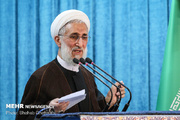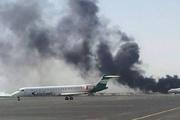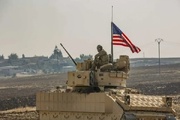1. Is there any other opportunity to invest in this industry to get more profit?
2. Are the current prices of auto-listed stocks equal to the intrinsic value of the companies or it is a kind of stock bubbles?
3. What would happen in the future of Iran’s auto industry? Is there any hope to squeeze itself from this very volatile environment?
4. What are the general view of domestic pros and cons or external opportunities and threats related to this industry?
Hence, analyses from different viewpoints can help us with a rational prediction to answer these questions and make our strategy.
Part 1: A Quick Glance at World Auto Industry
Currently, world’s total production exceeds 900 million units while its auto per capita is seven. In 2002, there was a capacity of approximately 80 million units worldwide and it is estimated that in 2010, it would reach to 100 million. Considering the average current operation rate equal to 70 percent, some 58 million automobiles were produced in 2002. With the same operation rate in 2010, the global production is expected to reach 70 million cars.
Auto industry has a share of 10 percent in developed countries’ GDP, and 3 percent forecasted growth in the world’s real GDP, which shows that the industry still plays an important role to boost economy.
In recent years, the marginal profit of auto industries declined. The main reason refers to excess supply in developed countries. For example, in 2001, some 56 million cars were produced worldwide, bringing $1,303 billion. The figure registered $14 billion net profits, showing a 1.07 percent hike in margin profit.
Six worlds’ giant automakers, including General Motors, VW Groups, Ford groups, Daimler Chrysler, Toyota, and Renault-Nissan, along with their affiliates, account for 85 to 90 percent of world auto production. Since these companies listed in semi-efficient market, the stock prices are close to intrinsic value.
Part 2: Iran’s Auto Industry
4.5 million automobiles are shuttling in the 70-million population Iran while the country’s auto per capita stands at 14 units. The figure demonstrates the country’s potential demand for various cars, showing a considerable gap between Iran and developed countries. Experts estimate that the demand would rise to eight million in next 10 years, which provides strong evidence for elasticity of demands in Iran.
In 2002, the total amount of manufactured cars in Iran reached 532,000 units.
41 percent growth in the current Iranian calendar year, signals that the production will reach to 750,000 units.
Presently, 15 active automaking companies are accepted in TSE. Therefore, our focus would be on auto industry activists listed in TSE, according to Pareto principle.
On the contrary, in accordance with production sales plans announced by these companies, annalists expect an increase in the future income and profit of the companies that can lead to a remarkable hike in earning per share.
Statistics say 420,000 cars have been sold more than the previous Iranian calendar year of 1381 (ending March 20), which presents no important elements affecting the process of selling by automakers. It is estimated that in 2005, the total production of cars exceeds 1 millions and the gap between supply and demand get narrower.
Part 3: Iran’s Autos Industry Analysis
Our analysis divided into two sections:
1: Analyzing Iran’s auto industry regarding non-financial items:
First, it is clear that the auto industry is capital and labor intensive. Based on growing rate of unemployment in Iran as well as broad investment on this industry, analysts expect that state supports continue. According to latest news, the government has accepted to grant financial aids to some auto companies.
Second, 175-percent tariffs for importing cars, determined by officials, is another evidence of supports. The policy of importing cars on a limited scale implies that domestic companies would be able to enhance their standards, quality, and strengths.
Third, comparing consumer price index (CPI) with Auto Price Index (API), we can see when inflation is equal to 16 percent, the rate of API is equal to 3 percent which shows an increase in auto demands.
Fourth, there would not be considerable increase in the price of different models of car in the next two years, as the Minister of Mines and Industry Es’aq Jahangiri stated. Latest figures show a 50 percent hike in auto production compared with the corresponding period last year that help unjustifiable increase in the price of domestically made cars to be controlled. Consequently, demands for cars will climb up.
Fifth, joint venture, not a new idea in Iran, is the main strategy that automakers now pursue. The history of Iranian automakers’ joint venture with famous foreign counterparts dates back to the 1979 Islamic revolution, when they became overwhelmingly state-owned. It goes without saying that the main purpose is to keep pace with global standards and grab new non-domestic markets.
2: Analyzing Iran’s Auto Industry Regarding Financial Items:
Eight active companies, owning 95 percent of the domestic market, are listed in TSE. According to Pareto principle, we can analyze the treatment of financial indices to find the way that the companies pursue to develop their competitiveness.
2-1- Auto industries index in TSE
In recent months, auto index had a progressive growth. The return of index is about 17 percent in a year, but, in the aforesaid period, return of index exceeds 400 percent. In comparison with other macroeconomic indicators such as rate of interest, inflation, and unemployment, this return seems to be impossible though it happened.
2-2-Brief Analysis of Auto making Companies listed in TSE
All financial indicators increased in the past year. It should be noted that our market considers one indicator in price movement more than others and it is not but EPS, and all auto making companies increased their earning per share during current and the last year, the price considerably increased.
Some analysts believe that the prices are higher than their intrinsic values. In other words, prices are over valued.
In order to overview these ideas, we will address the issue and related concerns from two perspectives: First analysis of auto industries in semi-efficient markets:
One reason behind the belief of some analysts stating the prices are overvalued on the stock market is that the price-earning ratio is on the top that seems to be unjustifiable. Now this is equal to 13.89 in TSE.
This ratio is equal to 17 for the major automaking companies such as Toyota and Ford Motors that are accepted in semi-efficient markets. Many believe that NYSE is one of the semi-efficient markets and because of high transparency, prices are near to intrinsic value, so, in spite of accepted growth stocks, prices related to TES auto listed companies are not so far from their intrinsic values.
Part 4: SWOT Analysis of Iran Auto Industry
In order to invest in Iranian auto industry, first, it is necessary to analyze these companies and, to determine their investment strategy, one way could be SWOT analysis (identifying your Strengths and Weaknesses, and examining the Opportunities and Threats), which includes the following:
1. 4-1. Domestic Merits:
a. Governmental supports
b. Loans & grants
c. High tariffs
d. High production and sale
4-2- Domestic Weaknesses:
a. Inadequacy of global standards production
b. High price in comparison with foreign products
c. Deficiency of quality and quantity in after-sales services.
d. Lack of customer-satisfaction strategy
4-3-External Opportunities:
a. Joint venturing with popular brands
b. Developing after sales services
c. Expanding quality criteria’s in order to pursue customer satisfaction strategy
d. Seeking new ways for car sale such as lease to buying and leasing
e. Export to foreign markets.
4-4-External Threats
a. Importing foreign-made cars.
a. Reducing tariffs
b. Balancing demand and supply
Conclusion:
We briefly analyzed Iran automaker companies in view of investment. We predict that regarding to social and economical concerns, the government supports continue and, during upcoming years, auto industries will face notable improvements.
AF/IS
END
MNA






















Your Comment